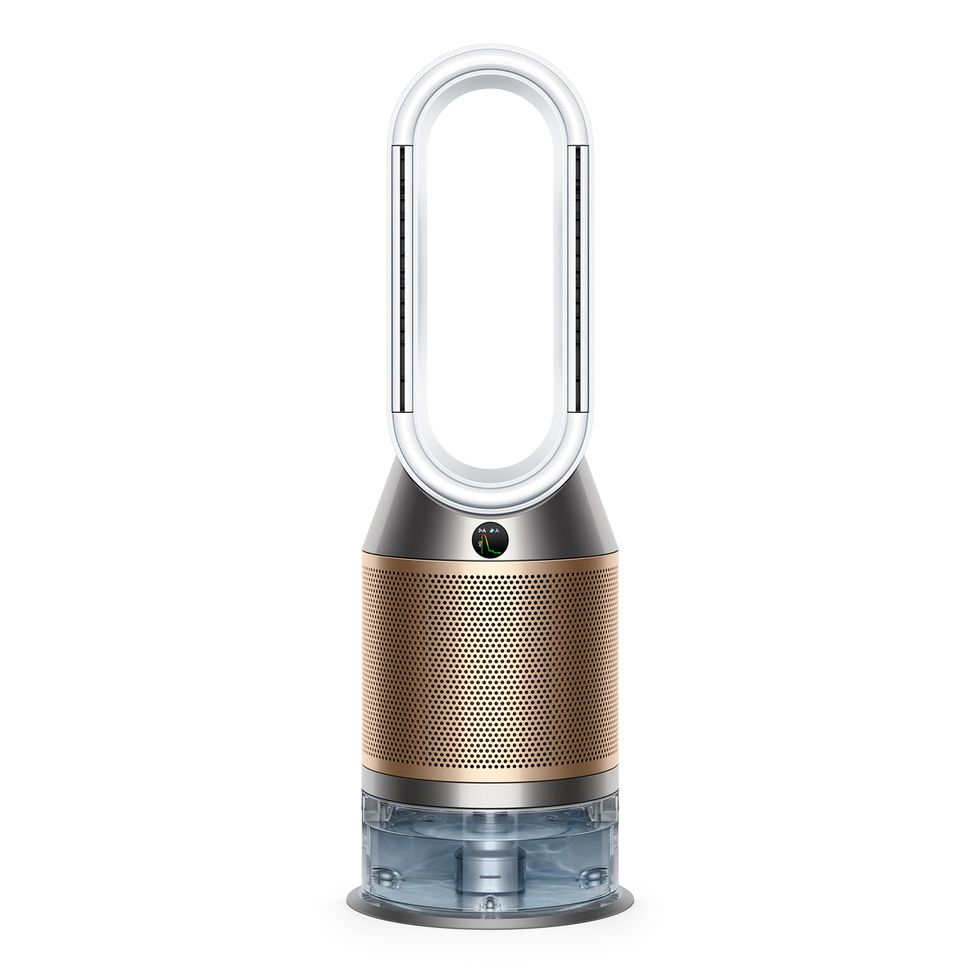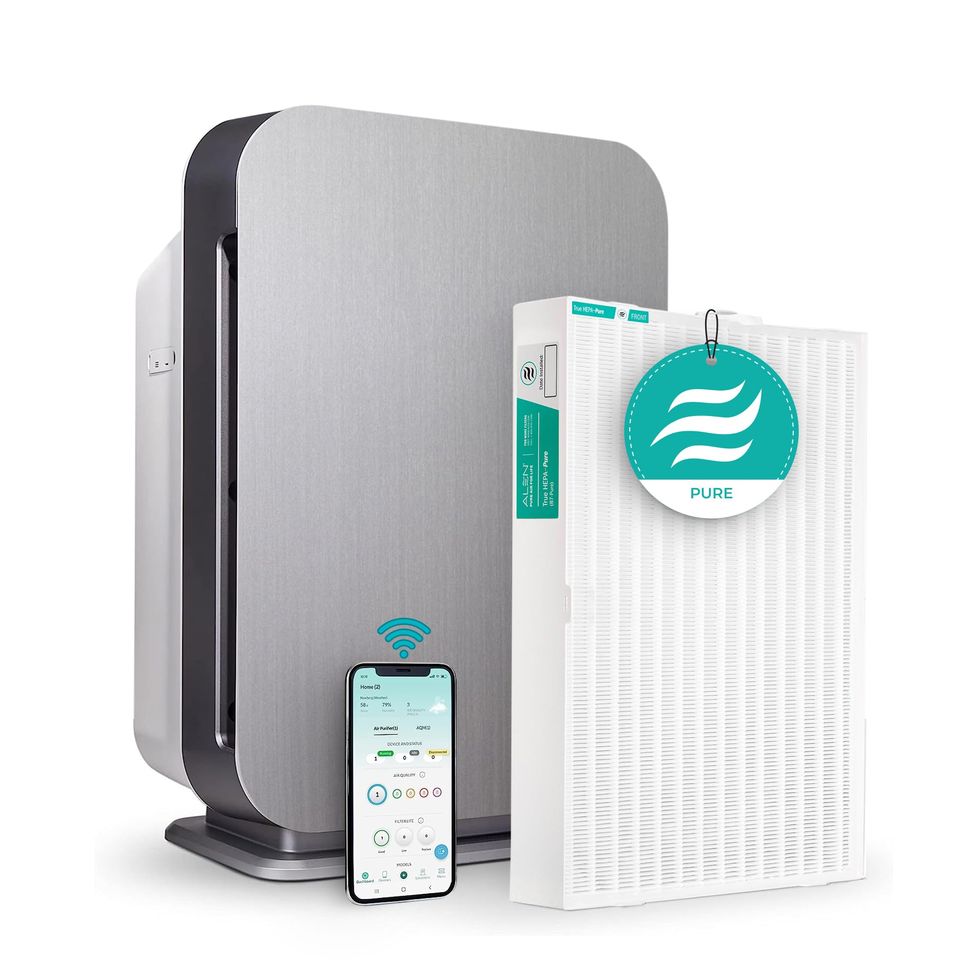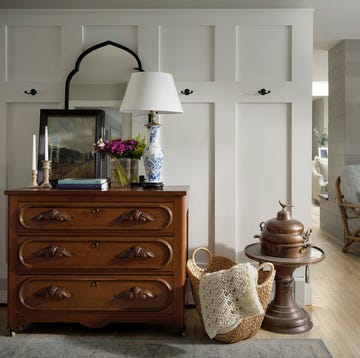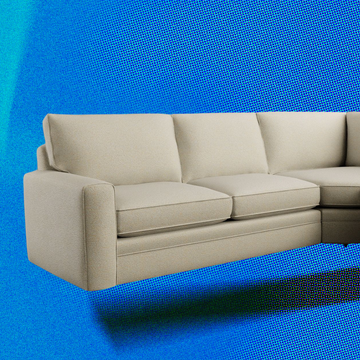The Best Air Purifiers to Help You Breathe Easy All Year Long
We tested 50 devices to find the best options for removing dust, pollen, air pollution and odors indoors.

We've been independently researching and testing products for over 120 years. If you buy through our links, we may earn a commission. Learn more about our review process.
With allergy season just around the corner, you might be considering a new air purifier for your home. Even when pollen counts are low, plenty of other airborne contaminants can impact indoor air quality, like dust mites, pet dander and mold spores.
That's why our team in the Home Improvement & Outdoor Lab at the Good Housekeeping Institute doesn’t wait for seasonal allergies to start reviewing air purifiers. As with other devices that affect home comfort, including dehumidifiers, humidifiers and portable air conditioners, we're in test mode all year long.
Over the last five years, we’ve reviewed more than 50 air purifiers, evaluating their ability to capture contaminants of all sizes, from microscopic viruses to visible pet hair. Ahead, find the best air purifiers that our experts say are best at clearing your home's air of harmful contaminants — no matter the season.
Pros
Fast, effective air cleaning
Quiet operation
Smart controls
Cons
Not ideal for large spaces
Coverage area: 456 sq ft (recommended) | Filter type: Pre-filter and true HEPA | Dimensions: 23.5" x 14.5" x 14.5" | Weight: 12 lbs | Filter replacement cost: $50 | CADR Smoke/pollen/dust: 300 | Noise level 23–50 dB
In our latest Lab tests, Blueair's 311i+ Max was the best at capturing the full range of contaminants floating through the air in a typical home. Its advanced multi-level filtration captures contaminants of all sizes — not just dander and pet hair, but also cooking fumes, dust mites and pollen. "It was exceptionally fast at clearing the air in our test chamber, plus it was among the quietest models, even on its higher fan speeds," said GH Institute Data Engineer Nikolas Greenwald.
The 311i+ Max's washable fabric pre-filter that encases the device (available in five colors) snags fur, dust and other large particles. Once air is pulled inside the device, it passes through a true HEPA filter that's designed to capture smaller particles down to 0.1 micron, the smallest of all tested air purifiers. That's enough to clear up to 99.97% of pet-generated pollutants across 465 square feet in under 13 minutes. Larger spaces will be better served by one of our more powerful top picks.
The Blueair's feature set includes Wi-Fi connectivity and a smartphone app that lets you monitor your home's air quality remotely. You can also program the air purifier to enter standby mode when you leave the house and turn it on when you're close to returning.
Pros
True HEPA filters particles down to 0.1 microns
Activated carbon filter adsorbs bad odors and some harmful chemicals
Cons
Noisy
Coverage area: 215 sq ft (recommended) | Filter type: Activated carbon pre-filter and true HEPA | Dimensions: 9.75" x 9.75" x 12" | Weight: 7.2 lbs | Filter replacement cost: $33 | CADR Not listed | Noise level 24 dB
Many homes need multiple air purifiers — one for the bedroom, one for the kitchen and so on. Shoppers on a tight budget can buy three or four of these GermGuardians for the price of a single model from a premium brand, without sacrificing much in the way of performance.
The purifier's true HEPA filter can filter particles down to the size of 0.1 microns. It also features an activated carbon filter, which removes bad odors and some harmful chemicals through the process of adsorption. Just note that if you live in a hot or humid climate, you won't reap the full benefits here as chemical adsorption is less effective when temperature and air moisture content is high.
Our testers put the air purifier through the ringer with at-home road tests in New York City during several air quality alerts. One tester told us that after just one hour of operation, "the room felt normal and livable." Another tester found that it could be relatively noisy at the maximum setting, so those seeking ultra-quiet purification should consider our top pick instead.
Honeywell InSight HEPA Air Purifier

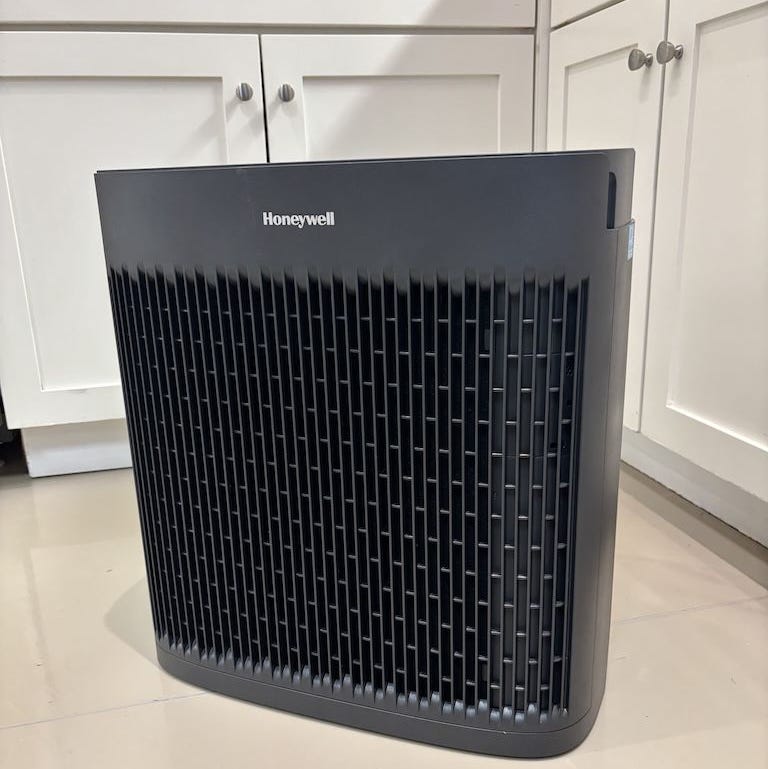
Pros
Onboard sensor provides realtime feedback about air quality
Low-cost replacement filters
Cons
Big, boxy design takes up a lot of space
Coverage area: 360 sq ft (recommended) | Filter type: Pre-filter and true HEPA | Dimensions: 17.7" x 18.8" x 10" | Weight: 13 lbs | Filter replacement cost: $25 | CADR Not listed | Noise level 60 dB
Our testers loved the constant flow of information they received from this Honeywell, another established brand in the home comfort space. Designed for areas up to 360 square feet, the air purifier is capable of capturing up to 99.97% of airborne allergens and particles like dust, pollen, pet dander and smoke.
The distinguishing feature is the built-in VOC sensor that provides real-time feedback and adjusts cleaning levels automatically. The unit also has a color-coded Air Quality Indicator display that allows for quick and easy monitoring from anywhere in the room. “Very effective,” one tester reported, following several months of home evaluation. “I was shocked at how well it was able to detect irritants in the air.’’
Our product analysts also highlighted the relatively low cost of the replacement filter, which you'll appreciate if you need to run more than one air purifier at the same time. You can also spend more on an additional specialty filter designed to target specific allergens, like smoke, pet allergens and VOCs.
The only downside of the Honeywell is its big, boxy design. "It was hard to find a good spot for it in my home," one tester told us, though she went on to say that "the good outweighs the bad so I'm not too bothered by that part."
RELATED: The Best Air Purifiers for Allergies, Tested by Experts
Pros
Powerful air cleaning
Extremely durable housing
Cons
Bulky housing takes up a lot of storage space
Coverage area: 550 sq ft (recommended) | Filter type: Pre-filter, activated carbon and true HEPA | Dimensions: 15"D x 24"W x 23"H | Weight: 39 lbs | Filter replacement cost: $80 | CADR Not listed | Noise level: Not Listed
Remodeling projects kick up a lot of dust, not to mention the haze of chemical off-gassing from building products like solvents and adhesives. The BluDri is a heavy-duty air purifier designed with that harsh environment in mind. It features a powerful motor and an advanced three-stage filtration system, all contained in durable plastic housing that can withstand the wear and tear of a busy construction site.
We put the BlueDri through its paces during testing for our 2025 Good Housekeeping Home Reno Awards. It earned big points for innovation. “I’ve never owned or seen a jobsite air purifier, which makes this one of those ‘Why didn't I think of that?’ products” said Fernando Pagés Ruiz, a Houston-based homebuilder, developer and author who also serves as an outside judge on our awards program.
In Lab tests, our experts liked the true HEPA filtration, which removes 99.97% of particles equal to 0.3 micrometers. The pre-filter snagged larger particulates, and the carbon filter helped neutralize odors. The air purifier also has a lot of handy features, like its on-board GFCI outlet that lets you charge your phone or run a power tool. An LED indicator light tells you when it’s time to change the filter.
The BlueDri is the biggest and heaviest air purifier from our tests and its applications will be more limited than a standard portable air purifier. But pro remodelers and hardcore DIYers should get plenty of use out of it, plus our experts say it's also great for drying out damp spaces, after a flood for example.
Pros
Fast, powerful air cleaning
Built-in humidifier and fan
Sleek, intuitive app
Cons
Expensive, plus high operating costs
Takes up a lot of room
Coverage area: 800 sq ft (maximum) | Filter type: Fabric pre-filter, true HEPA and catalytic filter | Dimensions: 12.30" x 12.30" x 36.33" | Weight: 18 lbs | Filter replacement cost: $80 | CADR Not listed | Noise level Not listed
Close to $1,000 is a lot to spend on an air purifier, especially if you need multiple units throughout the home. But Dyson has proven itself worth the investment in other product categories, from cordless vacuums to hair dryers, and that’s what our experts found with its latest air purifier, the Dyson Humidify+Cool Formaldehyde.
Its unique catalytic filter combines with true HEPA filtration to vanquish contaminants down to 0.3 microns. It was one of the fastest models at reducing particulate matter in our test chamber. And beyond that, it even has humidifying and cooling capabilities to help keep spaces dry and comfortable.
The Dyson also has one of the most sophisticated onboard air monitors we’ve seen on a purifier. It measures the presence of volatile organic compounds (VOCs), nitrogen dioxide and particulate matter and then relays the data, along with ambient temperature and humidity levels, to a sleek app. “The interface on the app is extremely intuitive and should give users a very clear picture of their home’s indoor air quality,” said Greenwald.
If you’re willing to spend this much on an air purifier, operating costs might not be an issue. But we still want to mention that at $80 a pop, the Dyson’s replacement filter is up there with the most expensive. Plus, there’s the $28 cleaning kit you’ll need to use a few times a year to keep the device running smoothly.
Last but not least, the air purifier is massive, standing 3 feet tall. If neither of those is a deal breaker for you, the Dyson Humidify+Cool Formaldehyde won’t disappoint when it comes to optimizing your home’s indoor air quality.
Levoit Core 400S Smart True HEPA Air Purifier
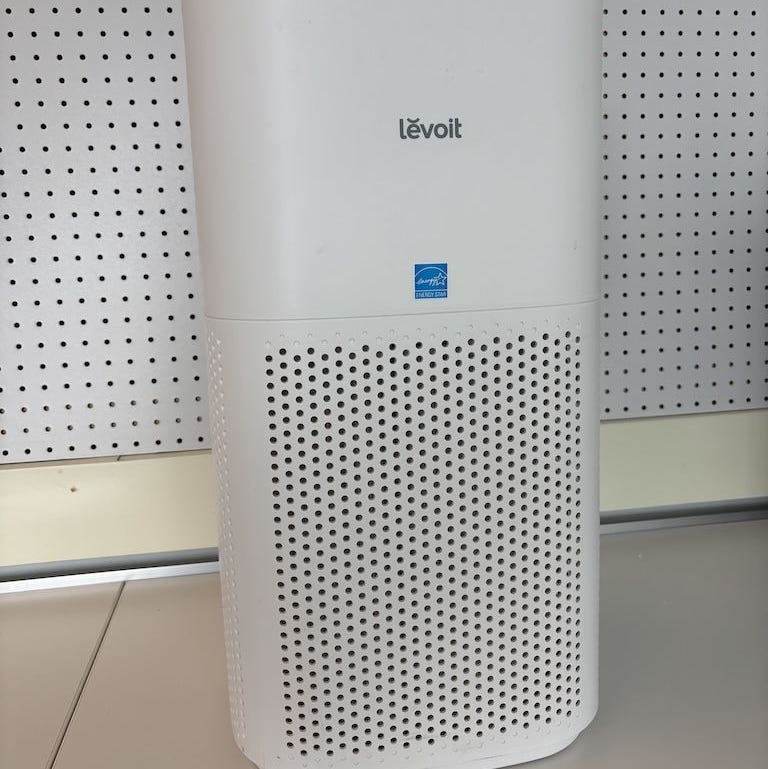
Pros
Solid air cleaning
Quiet
Cons
Not suited for large spaces
Coverage area: 403 sq ft (maximum) | Filter type: Fabric pre-filter, true HEPA and carbon activated | Dimensions: 10.79" x 10.79" x 20.47" | Weight: 12.79 lbs | Filter replacement cost: $50 | CADR 260 | Noise level 24 dB
This Levoit air purifier stood out to our testers for its combination of value, performance and intelligent smart design. The unit’s three-stage filtration, including a true HEPA filter, helps it capture airborne pollutants down to 0.3 microns in rooms up to approximately 400 square feet. That coverage area is a bit less than average, so the Levoit is best-suited to medium-size rooms — for example a bedroom or family room, as opposed to an open-plan living area or a large finished basement.
"We also liked its built-in precision laser sensor, which accurately monitors particles in the room and auto-adjusts fan speeds as needed," said Greenwald. The purifier is incredibly quiet, operating at just 24 dB, which you’ll appreciate if it’s stationed in your bedroom. (One of our testers has been running the unit for several months in her home and said the light hum is quite peaceful at night.)
Then there are its smart capabilities, which we love, including Levoit's VeSync app that allows you to monitor real-time air quality, view filter life and set schedules.
Pros
Sleek Scandinavian design
Quiet and effective air cleaning
Cons
High tech features might be complicated for some users
Coverage area: 525 sq ft (maximum) | Filter type: Dual fabric pre-filters, true HEPA and carbon activated | Dimensions: 6.7" x 16.3" x 16.1" | Weight: 12.79 lbs | Filter replacement cost: $70 | CADR Not Listed | Noise level 23 dB
The primary job of any air purifier is clearing the air of harmful contaminants. But if the unit is going to sit out in the open, looks matter too. With its clean-lined Scandinavian design and robust cleaning power, the Renew Air Purifier from Airthings combines form and function as well as any air purifier we tested. With its textile front cover, guests might even mistake it for a floor speaker — if they notice it all given its quiet operation.
During extensive Lab tests, the Renew delivered fast, effective air cleaning, especially in mid-size spaces up to 200 square feet. Our engineers gave it points for its multistage filtration, including a true HEPA filter that removes 99.97% of particulates. “I also like the built-in air sensor that picks up on any changes in air quality and adjusts the fan speed accordingly,” said one tester. The purifier’s silent mode operates at 23 dB, which is even quieter than a whisper, perfect if the air purifier will live in a bedroom or home theater.
The companion Airthings app lets you monitor air quality trends in the home and operate the machine remotely — though some testers had trouble setting up the app, while others found the air purifier's onboard controls a little hard to master.
Pros
Robust cleaning power
Sleek front panel
Cons
Ionization setting not recommended by our experts
Coverage area: 1,300 sq ft (maximum) | Filter type: True HEPA and carbon activated | Dimensions: 11.5" x 18.5" x 27" | Weight: 27 lbs | Filter replacement cost: $100 | CADR 357 | Noise level 25–50 dB
When it comes to sheer air purifying power, the Alen is top with our testers. You'll pay a premium for that performance, and it's a beast of a unit, but the Alen is the rare machine that can capture contaminants down to 0.1 microns. It combines that advanced filtration with a powerful fan for massive cleaning power across 1,300 square feet.
Though the Alen has a hulking housing, it helps that it's one of the better-looking air purifiers to pass through our Labs, with its sleek front panel available in six colors. The combination of peak performance and high design doesn't come cheap: Besides the steep upfront price, filter replacement costs are several times as much as other models.
One other note: Our safety experts point out that the Alen has an optional ionization setting designed to combat even more pollutants. We don’t recommend this feature on any air purifier since it can produce ozone, a lung irritant. But even without the use of the ionization setting, the Alen should capture plenty of dust, pollen, smoke and more, while looking good in the process.
Pros
Carbon activation neutralizes odors
Washable pre-filter
Cons
Smaller coverage area than most
Coverage area: 361 sq ft (recommended) | Filter type: Pre-filter, True HEPA, deodorization and vital ion | Dimensions: 9.60" x 16.80" x 18.30" | Weight: 12.5 lbs | Filter replacement cost: $57 | CADR 246 (Smoke), 249 (Dust), 277 (Pollen) | Noise level 24.4 - 55.1 dB | CADR 180 | Noise level 25.6 - 51.3 dB
The Coway 200M True HEPA is an excellent air purifier for owners of heavy-shedding or smelly pets. It rivals our top-ranking BlueAir for performance, though its coverage area is a bit less (361 square feet versus the 456 square feet of the Blue Pure).
The Airmega's four-stage filtration system includes an activated carbon layer that’s designed to capture odors, including those from stinky cats and dogs. Our testers also like the washable pre-filter, which captures hair, fur and other large particulates before they reach the inner HEPA filters. Indicator lights give the heads up when filters need to be cleaned or replaced.
Pros
Sleek, space-efficient design
Easy to operate
Excellent, multi-level filtration
Cons
Relatively expensive to buy and operate
Has an ionization mode, which we don't recommend
Coverage area: 815 sq ft (recommended) | Filter type: Pre-filter, true HEPA, carbon activated filter and custom pet filter | Dimensions: 7" x 21.4" x 20" | Weight: 19.4 lbs | Filter replacement cost: $105
The MinusA2 from RabbitAir does a superb job of pulling a slew of pollutants from the air, thanks to its multiple levels of filtration. On top of that superb performance, it features a sleek, streamlined design. “It’s the first unit we’ve had in the Lab for testing that can be mounted to the wall," explained Greenwald. "The unit installed easily in our tests, so it should save floor space in your home, especially compared with the largest standing models, which can get quite bulky.”
Added our consumer tester: "Mounting the Rabbit on my wall keeps my floors clear and I haven't had to dust nearly as much since I started using it."
The MinusA2's multi-stage filtration includes the all-important true HEPA filter, rated to capture 99% of particulates less than 0.1 microns in size. A washable pre-filter snags pet hair and other larger allergens, while its activated carbon filter neutralizes odors.
RabbitAir is unique in that it also lets you choose a customizable filter based on the most prevalent pollutants in the home. If dander is your main trigger, the pet allergy filter is probably the best option. If you're allergic to mold spores, you might opt for the germ defense filter.
You're paying top dollar for the MinusA2, but in addition to the stellar performance, it is also living up to its ultra-quiet claim, especially in silent mode when its fan is whisper-quiet; even on the highest "turbo" setting, the fan only gets up around 49 decibels, or as loud as a soft conversation.
Keep in mind that, like the Alen, the MinusA2 has an ionization setting. While we prefer purifiers without this mode, at least with the MinusA2, the process for turning it off is straightforward and there is an indicator light on the face of the unit that indicates if it's in active ion mode.
How we test the best air purifiers
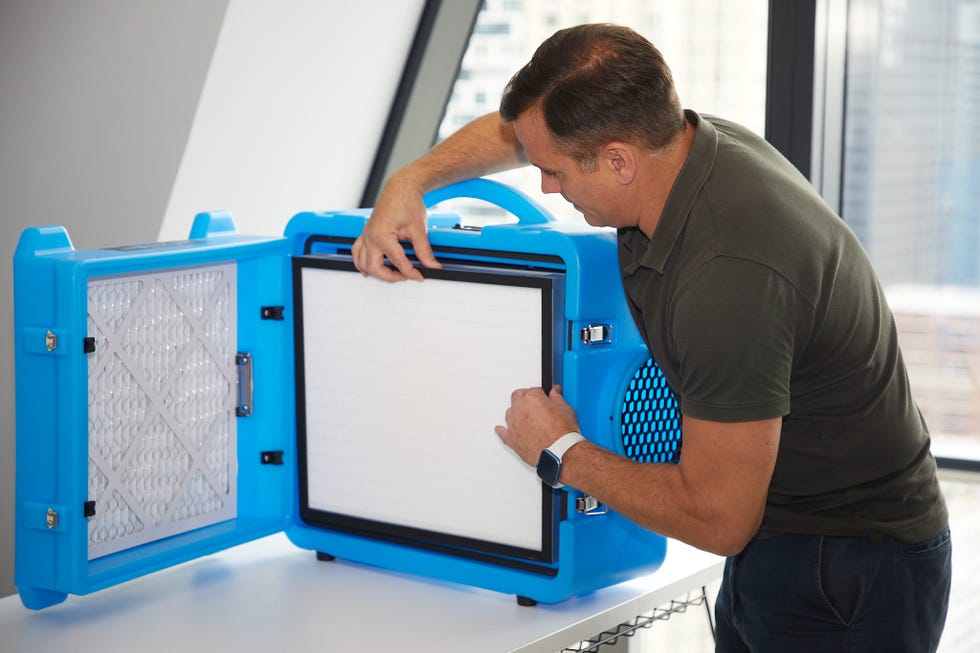
Air purifiers are on the list of continuously-tested products at the Good Housekeeping Institute. Throughout the year, our product experts keep tabs on the marketplace to identify the best air purifiers that you’re most likely to find at stores and online. We also attend trade shows and industry events, like the Consumer Electronics Show (CES) to stay on top of the latest innovations in indoor air quality.
Next, we identify brands that have performed the best and proved the most reliable through more than a decade of air purifier testing at the GH Institute. We also consider newer brands with unique features or innovations.
Based on an extensive preliminary review of technical data, including claimed coverage area and type of filtration, our review team selected various 2025 models for hands-on testing, which took place both in our Lab and homes, the latter allowing us to test how they performed in real-world conditions. Controlled Lab tests measured an air purifier's ability to capture specific contaminants, such as smoke and other VOCs (volatile organic compounds). At-home testing checked for general improvement of freshness, as well as overall usability.

Our consumer testers measure factors like ease of set-up, intuitiveness of controls and how uncomplicated it is to locate and replace the filter (or clean it, when applicable). Following the combined 60 hours of data review, Lab testing and at-home evaluations, we arrived at our list of best air purifiers out of 50 reviewed models.
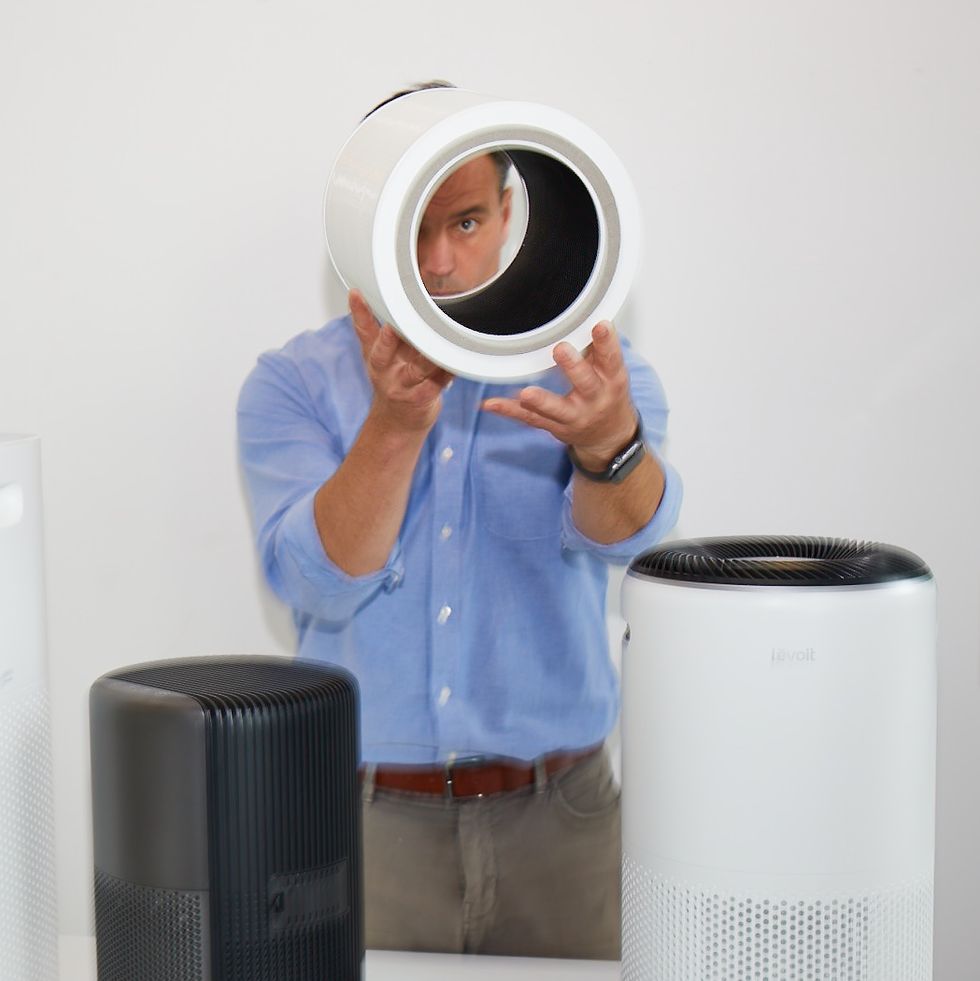
As part of our 2025 air purifier tests, experts closely evaluated the filtration systems on the devices, including the type of materials used and how easy each filter was to replace. Models with multi-stage purification, including a true HEPA filter, were best at capturing airborne pollutants.
What to look for when shopping for the best air purifier

To identify the ideal air purifier for your needs, consider the following factors:
✔️ Coverage area: Manufacturers typically list how much square footage a purifier is designed to cover. You might see multiple areas listed, say, one for the coverage provided in one hour and another for the coverage provided in five hours. Our experts recommend paying attention to the lower number since you'll likely want a device that delivers quick, repeated air cleaning.
✔️ Filtration: Most top-performing air purifiers use mechanical filters with a dense web of fine fibers that trap particles from the air as it is pushed through by a fan.
- True HEPA filters use a very fine mesh certified to capture 99.97% of particles measuring at least 0.3 microns (and in some cases down to 0.1 microns) in diameter. Our bottom-line advice is that the best cleaning power comes from a true HEPA filter.
- "HEPA-like" filters have not been certified to meet that standard. Some air purifiers also have a pre-filter designed to capture dust and other larger particulates. Our experts like this feature.
- Other filtration technologies are harder to evaluate, including those that incorporate activated carbon and ultraviolet light. We don't test these technologies specifically, so we can't attest to their efficacy.
✔️ Operating costs. The main consideration here is the price of replacement filters, which can range from $20 or less to $100 and up. Since you might need to replace the filters a few times a year, depending on your home's air quality, the expense can add up.
✔️ CADR: Short for "clean air delivery rate," CADR is an industry measure of how much clean air the purifier produces in a given test environment for various pollutants; it is usually reported in cubic feet per minute. The rule of thumb is that the CADR should be at least two-thirds of the area that the air purifier will be cleaning. So if your room is 300 square feet, look for a CADR of 200 or higher. Not all manufacturers list CADR, but we list it with the specs in our product reviews for those that do.
Do air purifiers really work?

In short, yes, air purifiers work. To clean the air, these appliances use filters and fans to remove particles and circulate the purified air back into the room. “Air purification is often used as part of a comprehensive treatment plan in the management of respiratory diseases,” says Derek Damin, M.D., Assistant Professor of Clinical Medicine at Vanderbilt University Medical Center.
People suffering from allergies or asthma might find air purifiers with High-Efficiency Particulate Air (HEPA) filters particularly helpful because they remove common allergens and fine particles (99.97% of those measuring 0.3 microns in diameter in a lab setting, according to industry standards) from the air.
Not all air purifiers meet that high bar. For example, the much-hyped, sleek-looking IKEA Förnuftig can only capture 99.5% of smaller airborne particles. Even air purifiers that excel at removing particles like dust, smoke and pollen are limited in their ability to capture smaller toxins, such as those from cleaning products and paint.
One more thing to note: The effectiveness of air purifiers in real-world situations likely won’t mimic those of controlled conditions in a lab. That means it can be difficult to measure an air purifier’s true efficacy of how it will perform in your home.
Where is the best place to put an air purifier?

For best results, place air purifiers as close as possible to the source of pollutants in your home. In the kitchen, for example, position it near the cooktop, where it will help capture odors and fumes. We also recommend keeping an air purifier in the bedroom, close to the bed, where it will filter out contaminants from the air you breathe while you sleep.
Some testers like the "white noise" effect of an air purifier's fan, but if you're sensitive to sound, choose a model with quiet operation, like the top-rated Blueair. We use a sound meter (pictured) to perform this evaluation.
Always position air purifiers away from walls and other objects that could impede airflow. The more circulation the better, to allow your purifiers to pull in as much contaminated air as possible.
Do air purifiers protect against smoke from wildfires?

Microscopic particles in smoke can trigger a range of health issues, from burning eyes to chronic lung disease, according to the U.S. Environmental Protection Agency, but "generally, outside pollution or smoke or temporary bad air isn't a constant concern for bystanders," says Ryan Roten, D.O., an emergency medicine doctor with Redlands Community Hospital in California.
If you're still concerned, Dr. Roten notes that a HEPA filter-equipped purifier is once again your best bet: "Anything that has a true HEPA filter in it is probably adequate enough to filter out most of the large particles that would be concerning,” he said. "Most of the smoky smell will also be addressed."
What you need to know about air purifier maintenance and operation

✔️ Cleaning: Apart from wiping down the housing every now and then, cleaning the exterior of the device is minimal. However, the filters that do the dirty work inside an air purifier require regular attention. Whether made of paper, fiber or mesh, the filters should usually be cleaned and/or replaced every few months or so (check the owner’s manual for specific recommendations). Some filters are reusable, but they require meticulous maintenance, so you don't usually find them on the most effective air purifiers. One exception is models with a washable pre-filter, designed to capture large particles before they reach the primary filter; this feature can cut operating costs by extending the life of the main inner filter.
✔️ Operation: For maximum efficacy, run the air purifier all the time when you’re home. Our picks are all UL-certified for safety, though as with any electrical device, be mindful of fire hazards like frayed wires. In areas where noise is a factor, like a bedroom, you could operate the machine on high when you’re out of the room, then drop it to a lower fan setting before going to sleep. It’s also best to keep windows closed, so the unit isn’t cleaning the air from outside or other parts of the home. And make sure airflow to the device isn’t obstructed by furniture, curtains or other objects.
Why trust Good Housekeeping?

Dan DiClerico has extensively tested and written about air purifiers for nearly 25 years. He has also spearheaded numerous investigative reports on the topic of indoor air quality, working closely with outside experts from government, industry and the home services spaces. As director of the Home Improvement & Outdoor Lab at the Good Housekeeping Institute, DiClerico oversaw the latest round of air purifier testing in our Labs and the continuous in-home, survey-based consumer testing that allows us to evaluate these devices in real-world conditions.
Nikolas Greenwald, data engineer at the GH Institute, contributed in-Lab testing of air purifiers for this report. Greenwald regularly evaluates the top performers and newest entries in the sector to find the best ones on the market. He has a bachelor's degree in chemical engineering and applies his knowledge of fluid dynamics and filtration processes to finding strong contenders in the home HVAC space.
Having written thousands of product reviews and how-to articles on all aspects of home ownership, from routine maintenance to major renovations, Dan (he/him) brings more than 20 years of industry experience to his role as the director of the Home Improvement & Outdoor Lab at the Good Housekeeping Institute. A one-time roofer and a serial remodeler, Dan can often be found keeping house at his restored Brooklyn brownstone, where he lives with his wife and kids.
As a data engineer in the Good Housekeeping Institute, Nik (he/him) works with all of our Labs to develop testing protocols and manage data collection and analysis. Before joining Good Housekeeping in 2022, Nik worked in the labs of MIT and Regeneron, working on projects ranging from chemical inventory and reporting to the development of bioassays. He holds a degree in chemical engineering from Northeastern University.
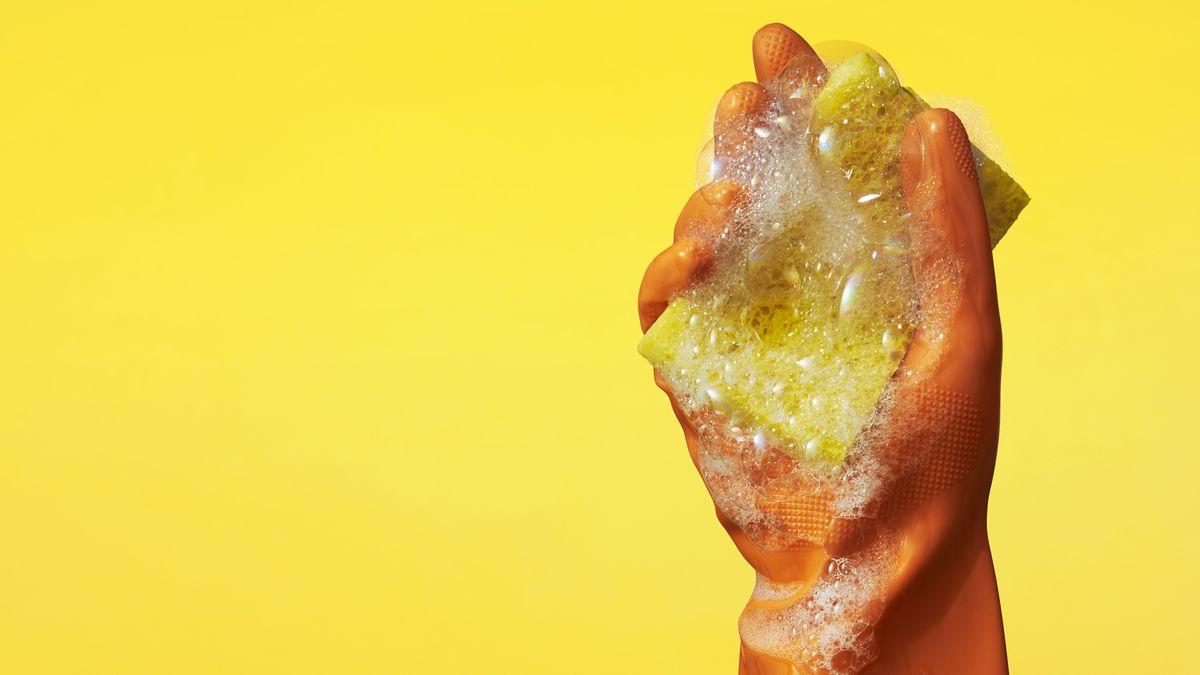

The Best Sleeper Chairs
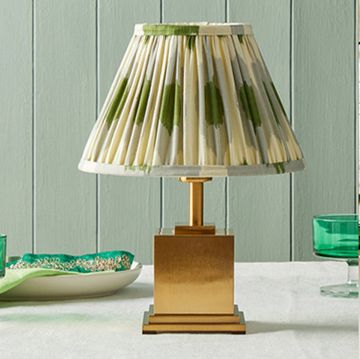
The Best Table Lamps for Any Space

What Is Gradual Decluttering? Experts Weigh In
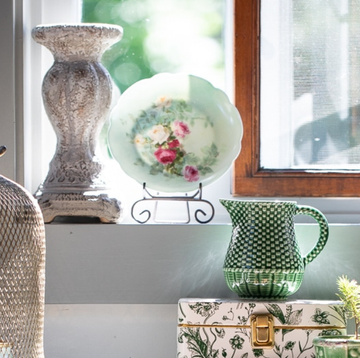
21 Window Sill Decorating Ideas for Added Charm



